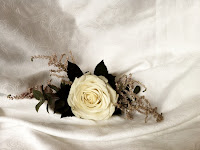This weeks flower is the Peony, and in my opinion, I think this flower easily gets the trophy for flower of the season. A combination of its beautiful appearance and its sweet scent is enough to hypnotise anyone. I’ve said this before, and I’ll say it again, the power of Peonies are unfathomable!
They Peony (or paeony) is the only plant from the plant family Paeoniaceae. Originally from Asia, Southern Europe and North America, the Peony plant is a herbaceous perennial plant. There are two main types, a shrub plant or a tree peony plant. The shrub usually grows from 50cm’s to 150cm’s and the tree variety can grow up to three meters tall. There are many different shades of the peony plant varying from white to burgundy red.
Peonies can mean anything from healing, life, happy marriage or gay life. The symbolic naming of the Peony is very interesting and explains why it has the meaning of healing and life. It is said to be named after Paeon, who was a studend of the Greek God of medicine and healing called Asclepius. Asclepius supposedly became jealous of Paeon and Zues intervened and saved Paeon from his teacher by turning him into a peony flower.
Growing peonies can be quite tricky but I have been told that when choosing a spot for you peony, make sure it is somewhere that you are prepared to enjoy the plant for up to 50 to 70 years. Buying a peony is a real investment, and they tend to not like being moved at all. If you would like to read more about how to grow peonies I suggest you go to this site: http://www.weekendgardener.net/perennial-flowers/plantpeony-100810.htm
Peonies can be a flower that can have such an impact to any space. Whether it is in a vase in your house or a bouquet of flowers for your wedding. Their smell can brighten anyones day. Below are some examples of how you can have peonies in your wedding bouquet. These photos have been kindly provided by Lily & May Floral Designs from Chelmsford. In these images it just illustrates what a beautiful addition the peony can make in your wedding bouquets.
Below are some examples of how you can display your peonies in any container that you may have available. Here is a picture of how I have displayed mine in a decorative jug.
I hope reading about these lovely flowers have brighten up your day also. If you have not yet smelled the beautiful scent of these flowers, make sure that you get a bunch while they are still in season!








































